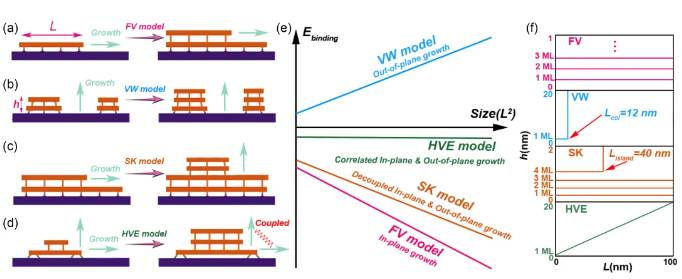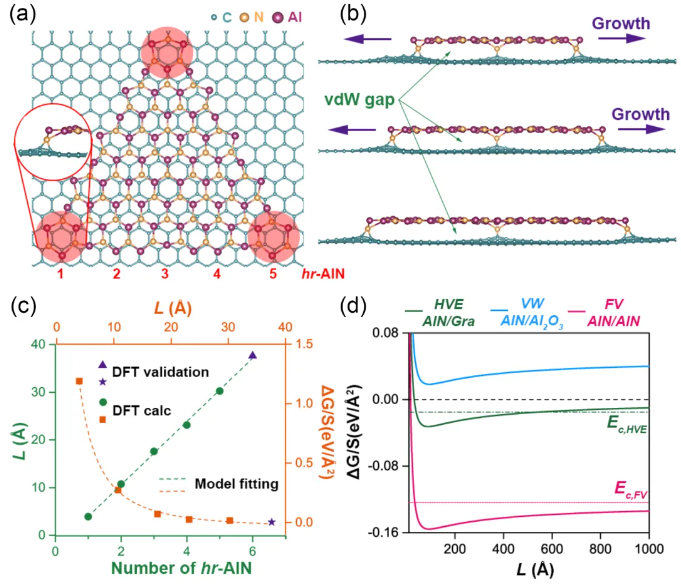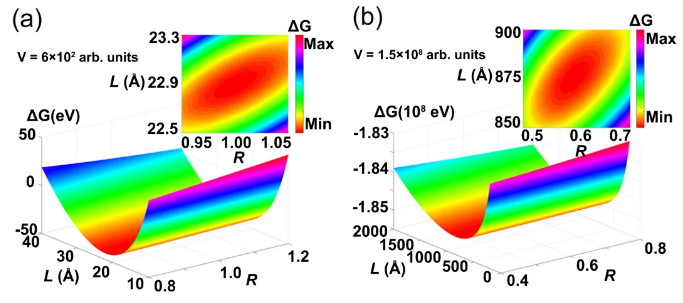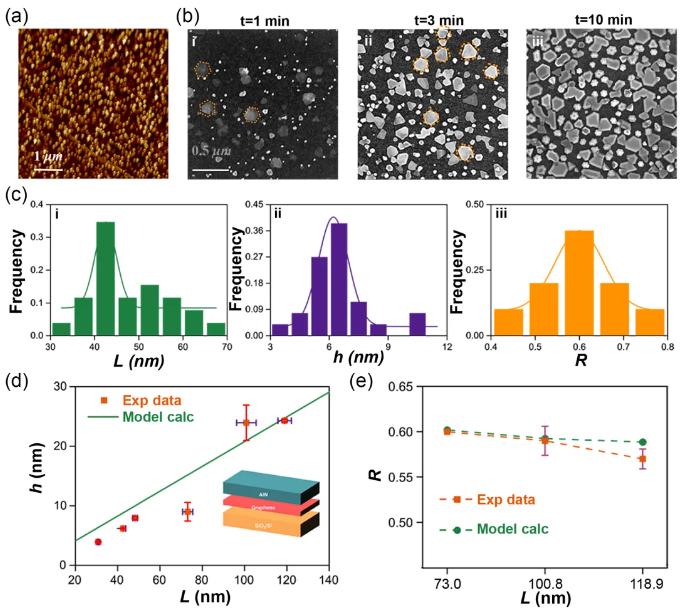Hybrid van der Waals Epitaxy
来源: 作者: 发布时间:2024-08-01
Recently, A/Prof. Lin Hu, Prof. Fawei Zheng and Prof. Yugui Yao’s team in School of Physics, Beijing Institute of Technology (BIT), by integrating multi-scale computational methods with experimental characterization, have proposed that the growth of nitride epitaxial layers on van der Waals substrates, such as AlN on graphene, might belong to a previously unknown model known as Hybrid van der Waals Epitaxy (HVE). This innovative achievement was published in Physical Review Letters and was selected as Editors’ Suggestion.
The study of novel physical phenomena in condensed matter physics and the fabrication of electronic devices in information science both greatly rely on the preparation of high-quality thin-film materials. Therefore, how to epitaxially grow high-quality thin-film materials on substrates is a long-standing focal issue in numerous research fields such as condensed matter physics, materials science, and surface chemistry. Based on nearly a century of research, people have gradually summarized three universal thin-film growth models, known as the FV (Frank-van der Merew), VW (Volmer-Weber), and SK (Stranski-Krastanow) models. The FV model describes a in-plane growth mode. In contrast, the VW model describes a out-of-plane growth mode. The SK model is a growth mode that lies between FV and VW. In these three known growth models, in-plane and out-of-plane growth are decoupled, and they can describe almost all known epitaxial growth processes of thin-film materials on substrates (Fig. 1). Recently, it has been discovered that high-quality non-van der Waals nitride semiconductor thin films can be grown on two-dimensional van der Waals substrates. This groundbreaking discovery not only opens up a new semiconductor growth mode but also sparks intense debate on its growth mechanism.

Fig. 1: Different growth models
To unravel this mysterious growth mechanism, the research team, taking the growth of aluminum nitride (AlN) thin films on graphene as an example, utilized multi-scale theoretical calculations and continuous medium model derivations to systematically study the growth dynamics of AlN thin films in-plane (Fig. 2) and out-of-plane directions (Fig. 3). Interestingly, they found a new type of bonding at the interface between AlN and graphene, namely, the hybrid van der Waals interaction. This unique bonding mode allows the thin film growth to exhibit a new paradigm that is significantly different from traditional models, which is named the HVE (Hybrid van der Waals Epitaxy) model. Under the HVE model, the growth of materials in the plane and out of the plane is more strongly coupled together and satisfies certain physical constraints, which are also influenced by the interface interactions. To verify the reliability of this new growth model proposed by theory, Prof. Xuelin Yang from Peking University and others conducted experimental validation, preliminarily confirming the reliability of this growth mode (Fig. 4).

Fig. 2: Growth in plane

Fig. 3: Growth in out-of-plane

Fig. 4: Validation in experiments
This discovery not only provides a brand-new model for the field of material growth but also offers a theoretical foundation for further optimizing the growth process of epitaxial nitride thin films, aiding their more critical role in the post-silicon era of information technology. A/Prof. Lin Hu from Beijing Institute of Technology is the first author and corresponding author, while Prof. Bing Huang from the Beijing Computational Science Research Center and Prof. Xuelin Yang from Peking University are corresponding authors. This research work was supported by the National Natural Science Foundation of China, the National Key R&D Program, the NSAF and the Beijing Institute of Technology Research Fund Program for Young Scholars.
Lin Hu*, Danshuo Liu, Fawei Zheng, Xuelin Yang*, Yugui Yao, Bo Shen, and Bing Huang*. Hybrid van der Waals Epitaxy. Physical Review Letters, 133(4), 046102 (2024). (Editors’ Suggestion). (*the corresponding authors.)
URL: https://journals.aps.org/prl/abstract/10.1103/PhysRevLett.133.046102




